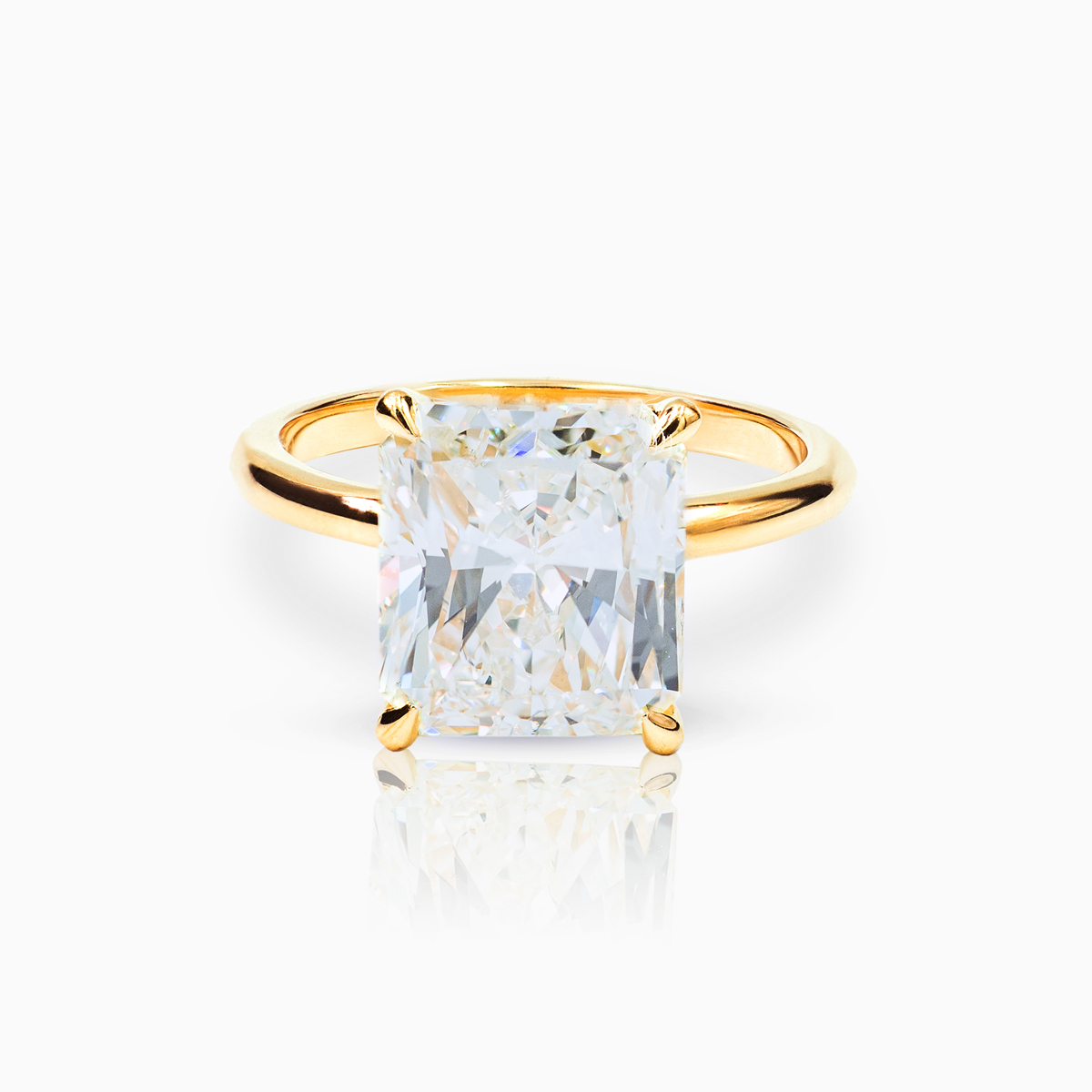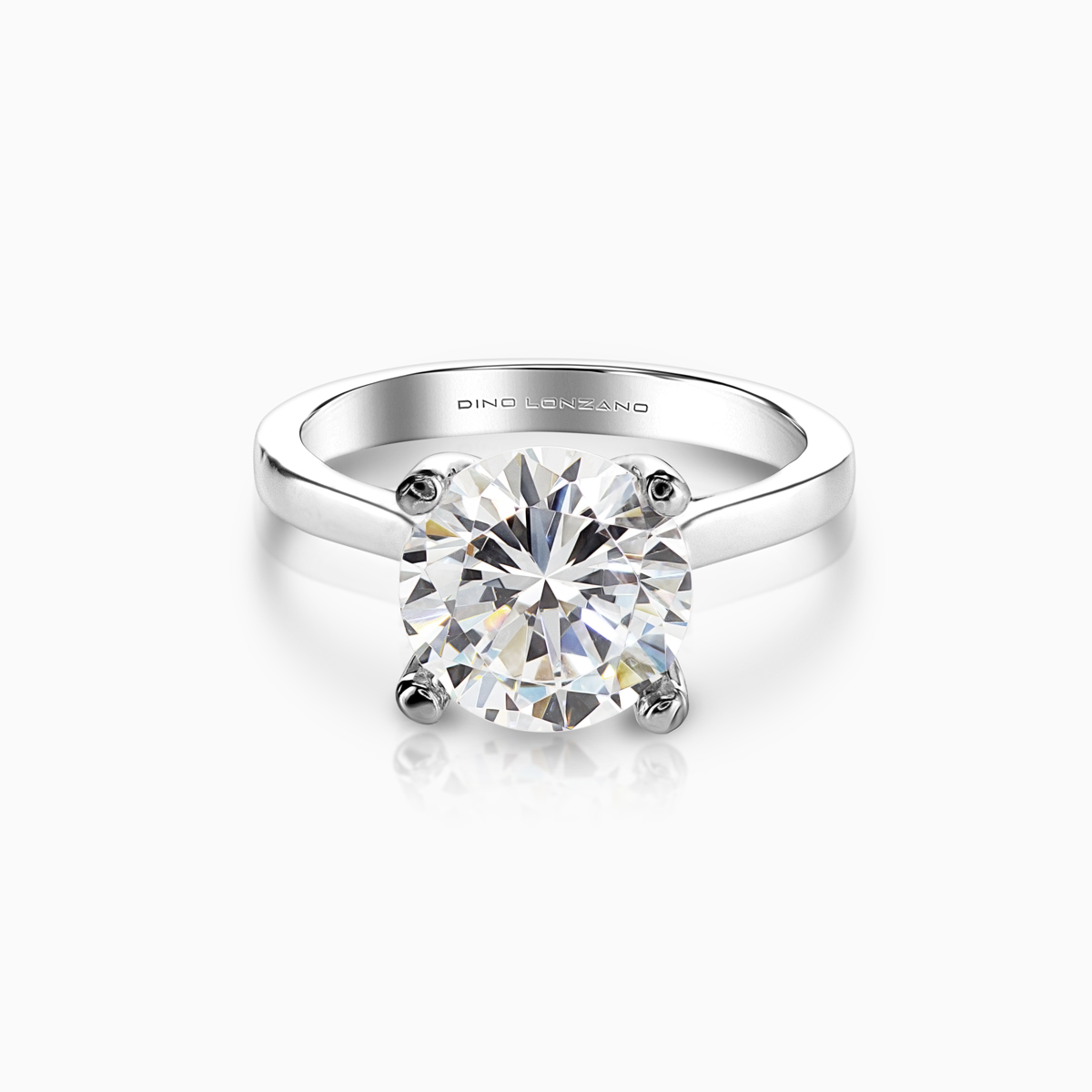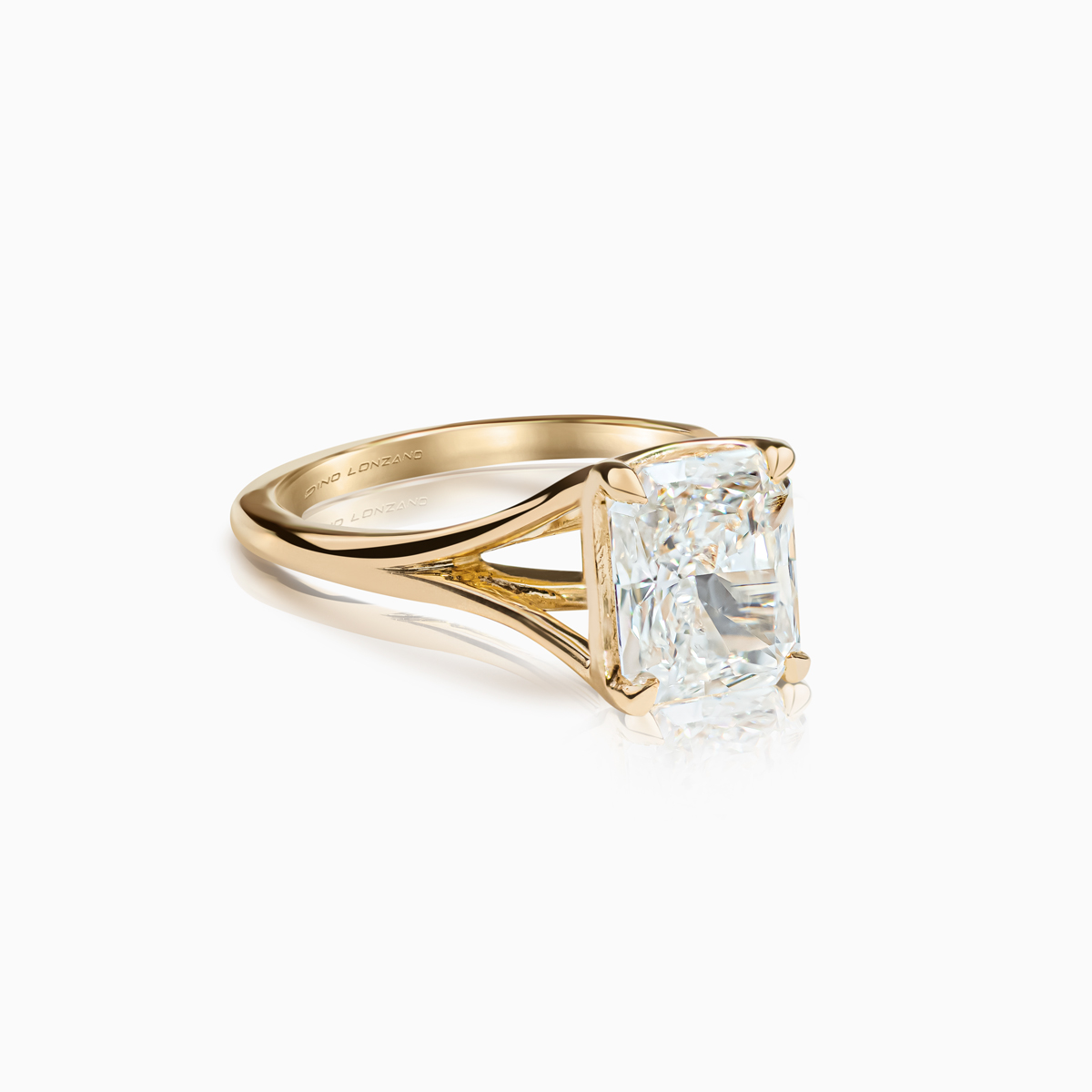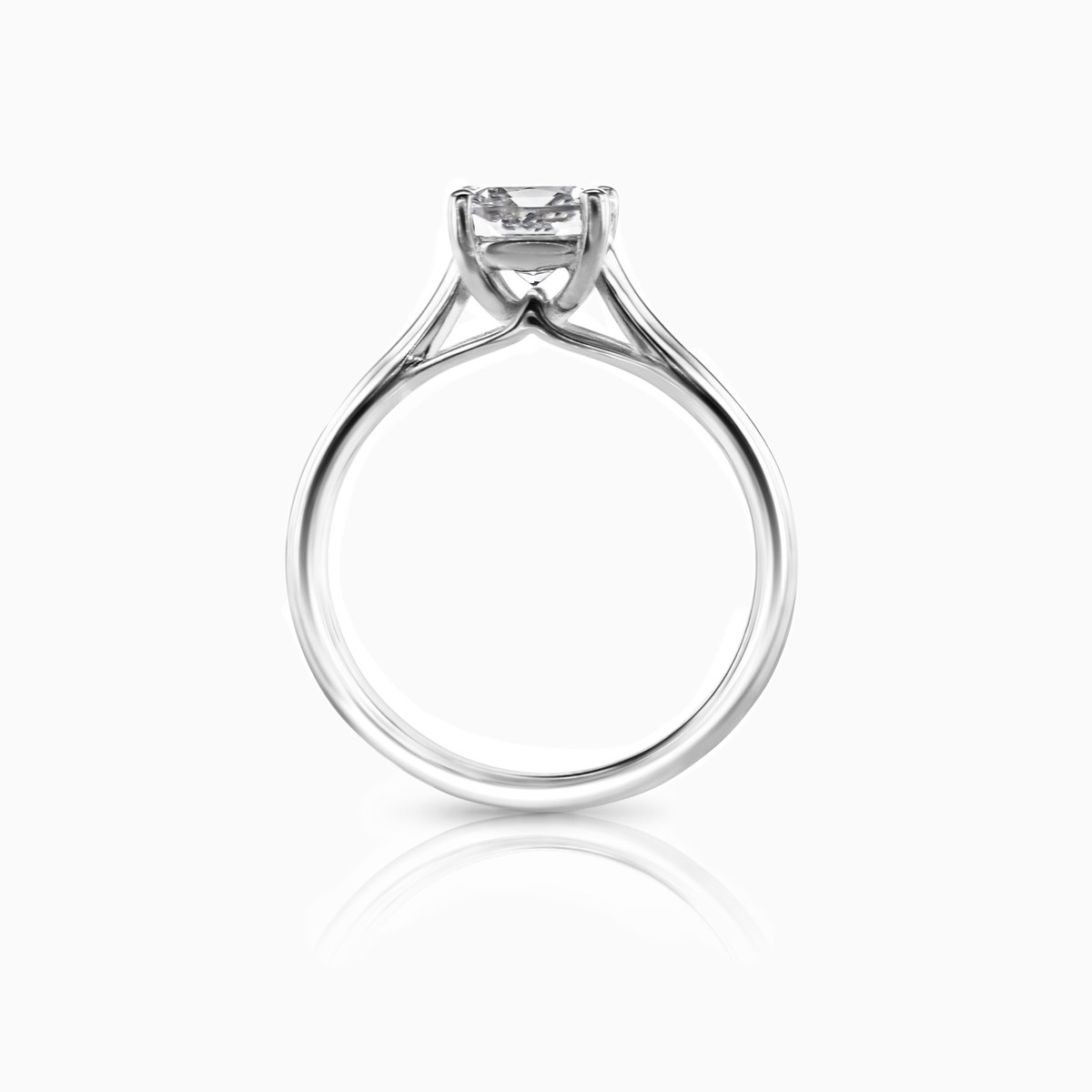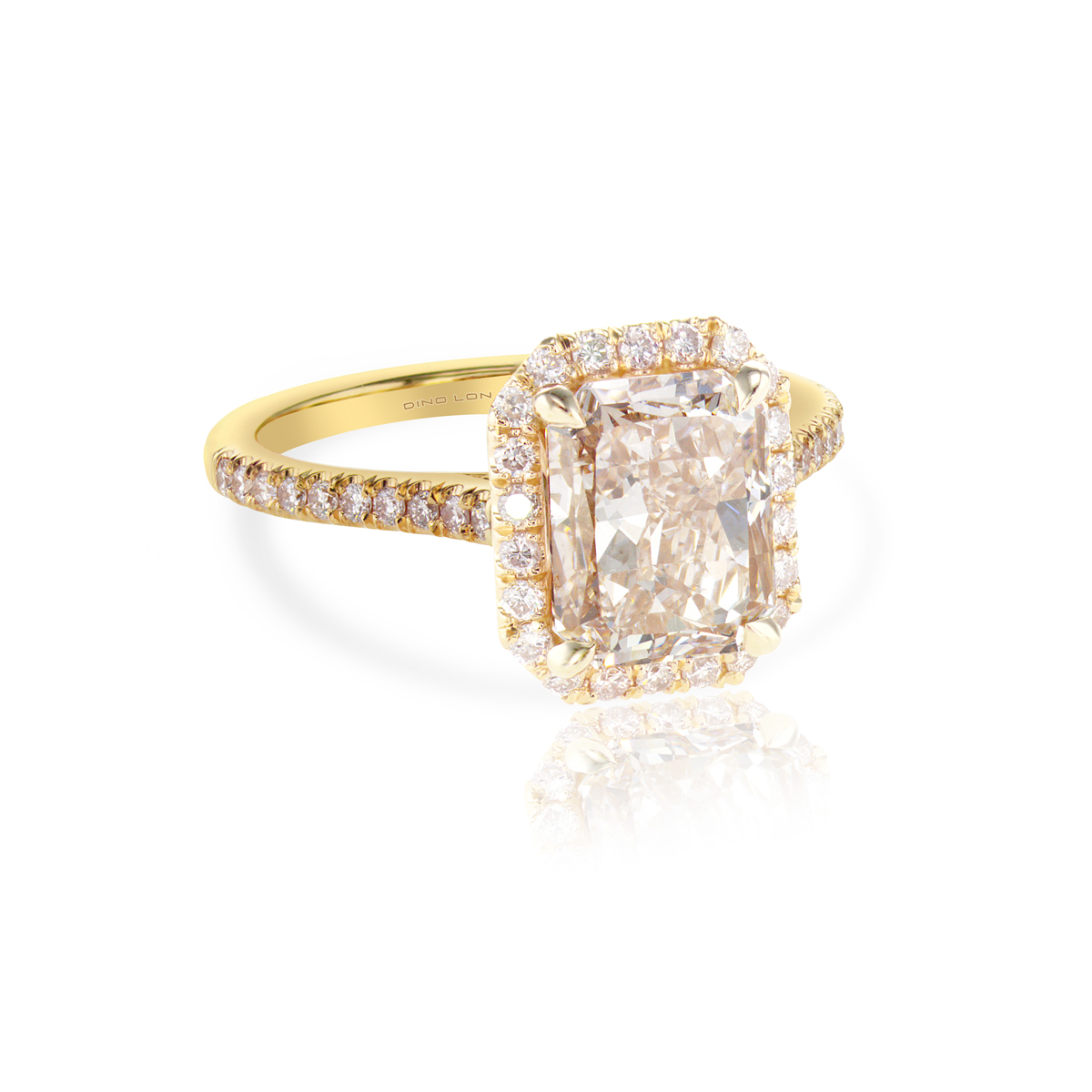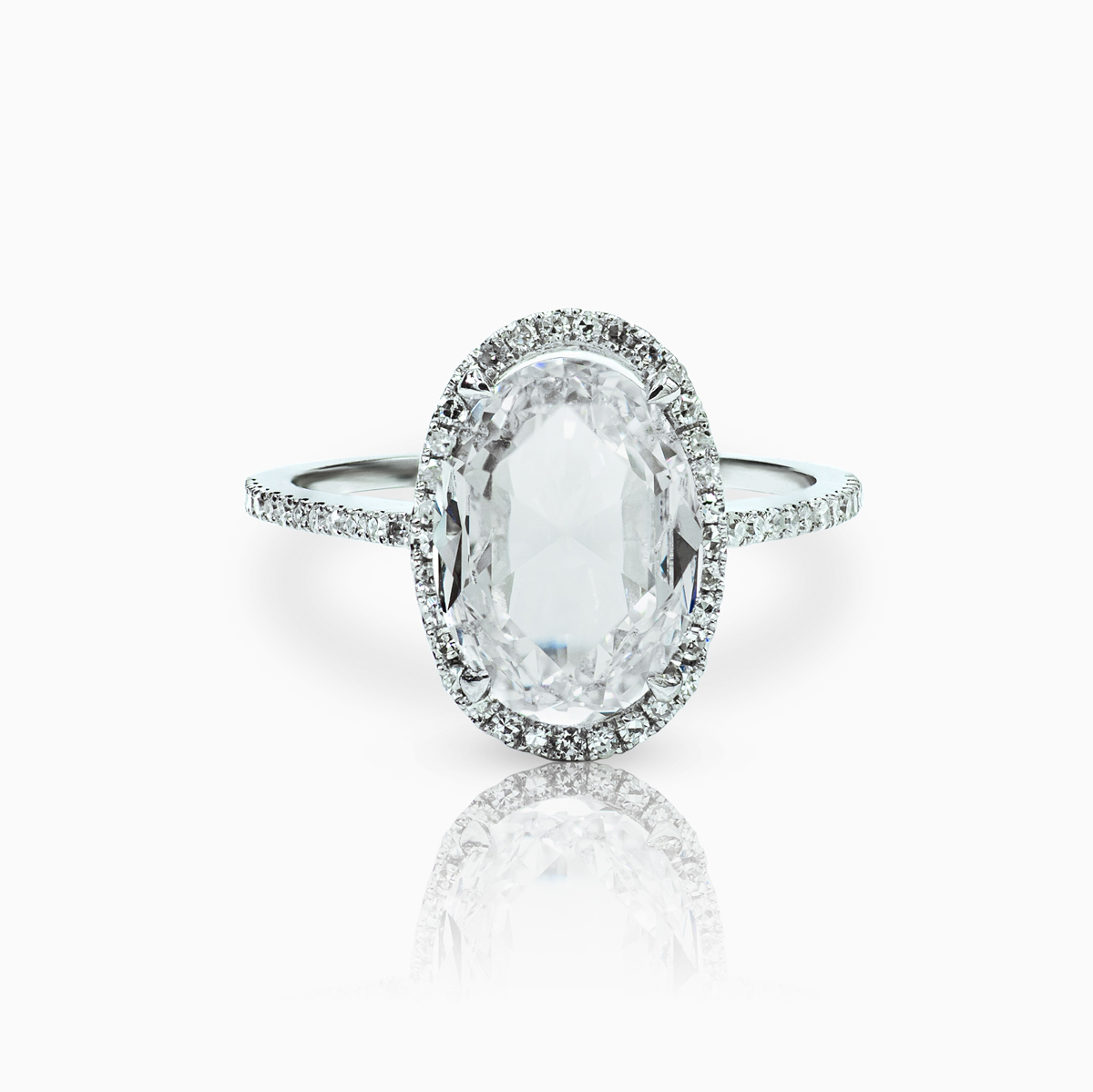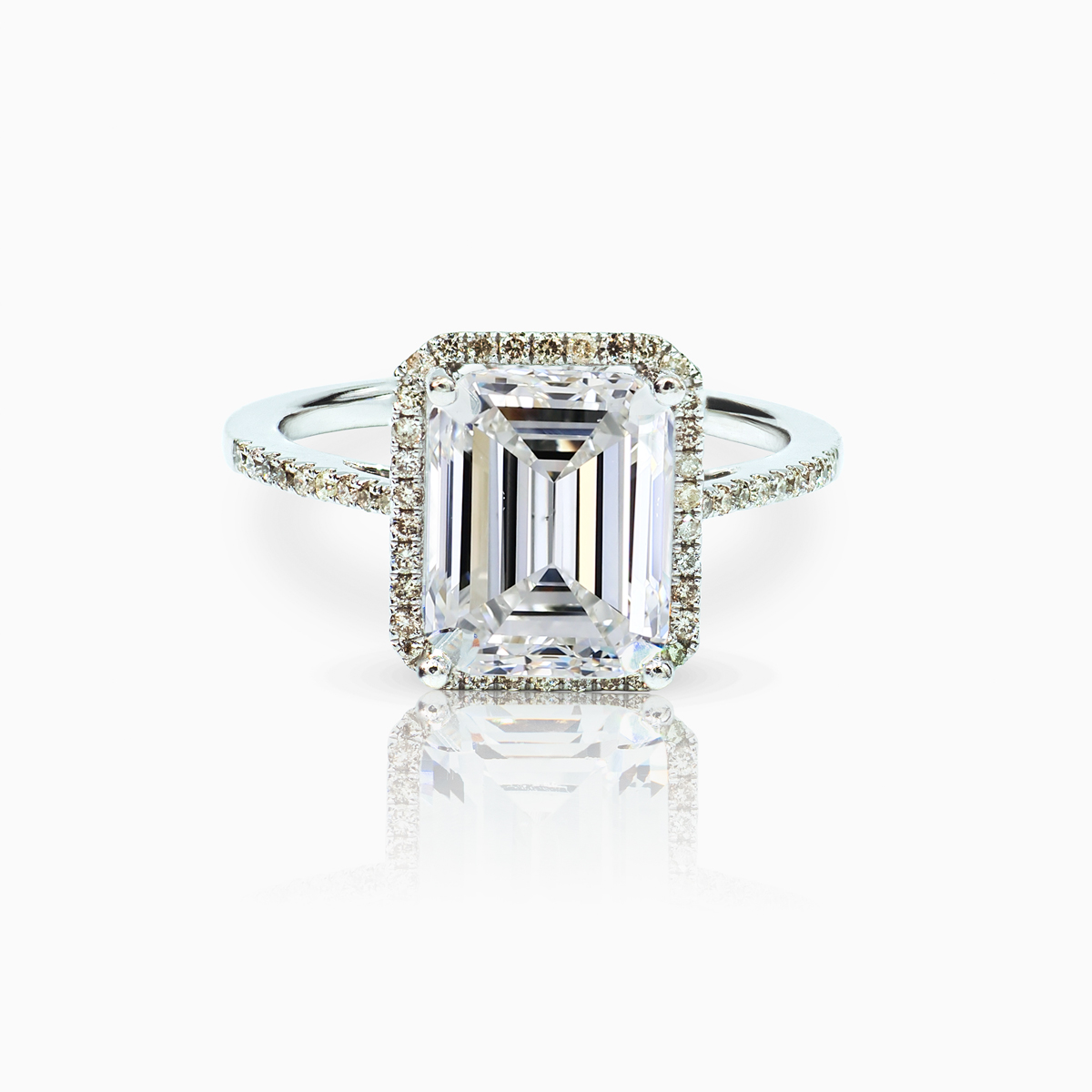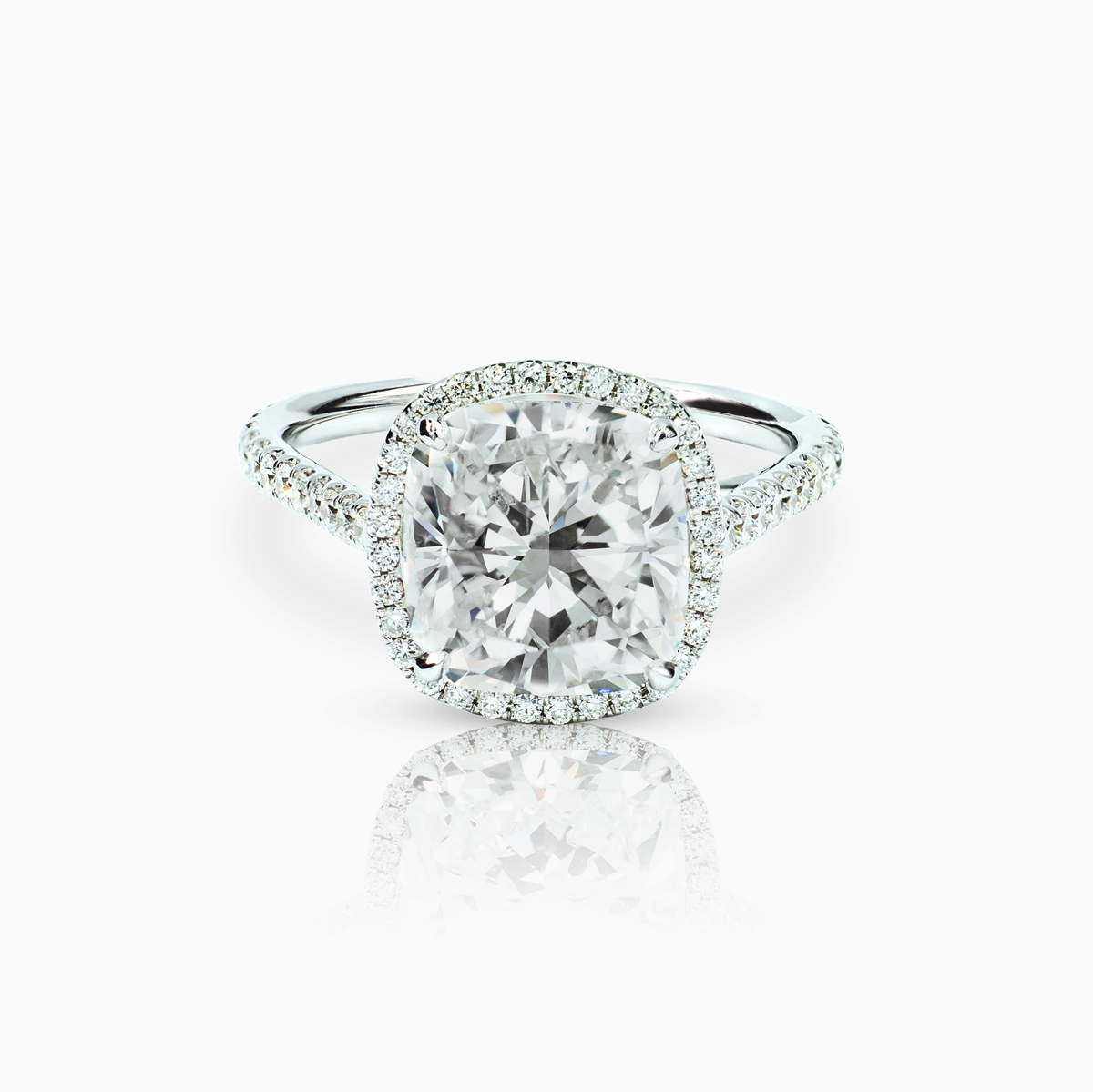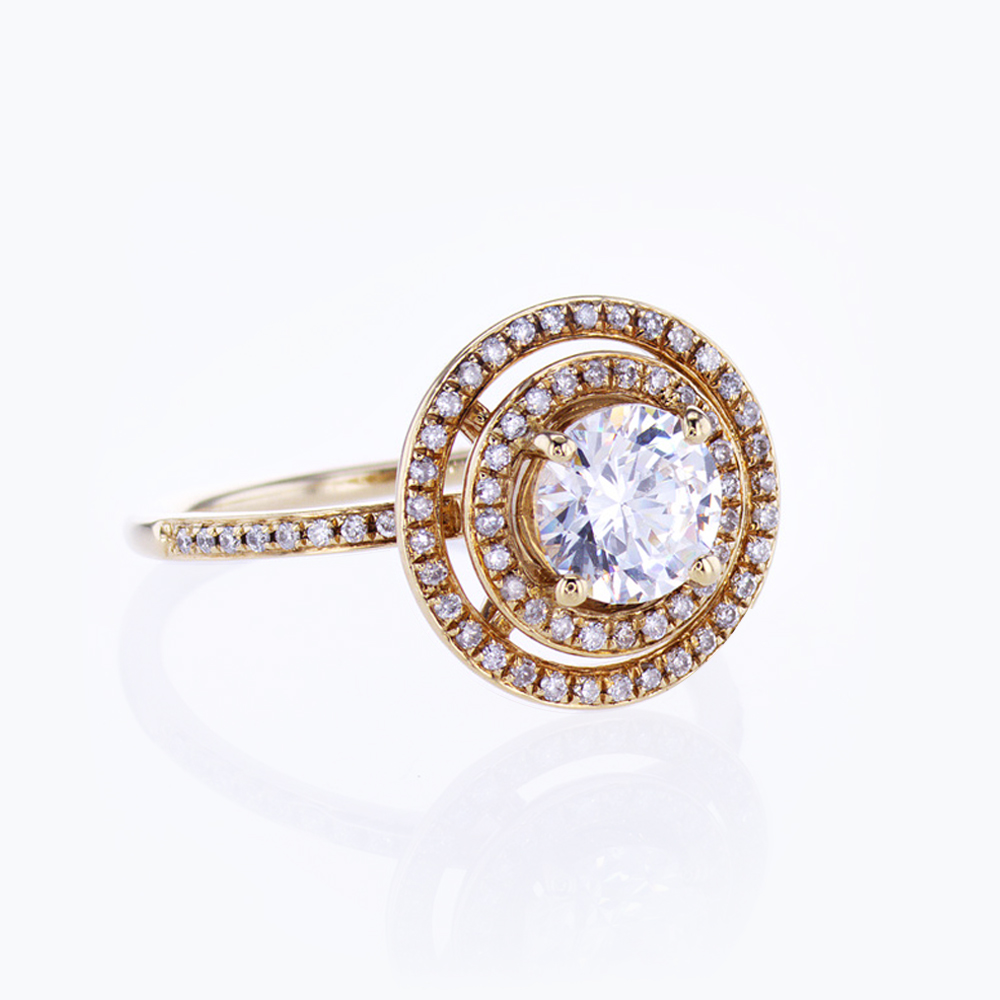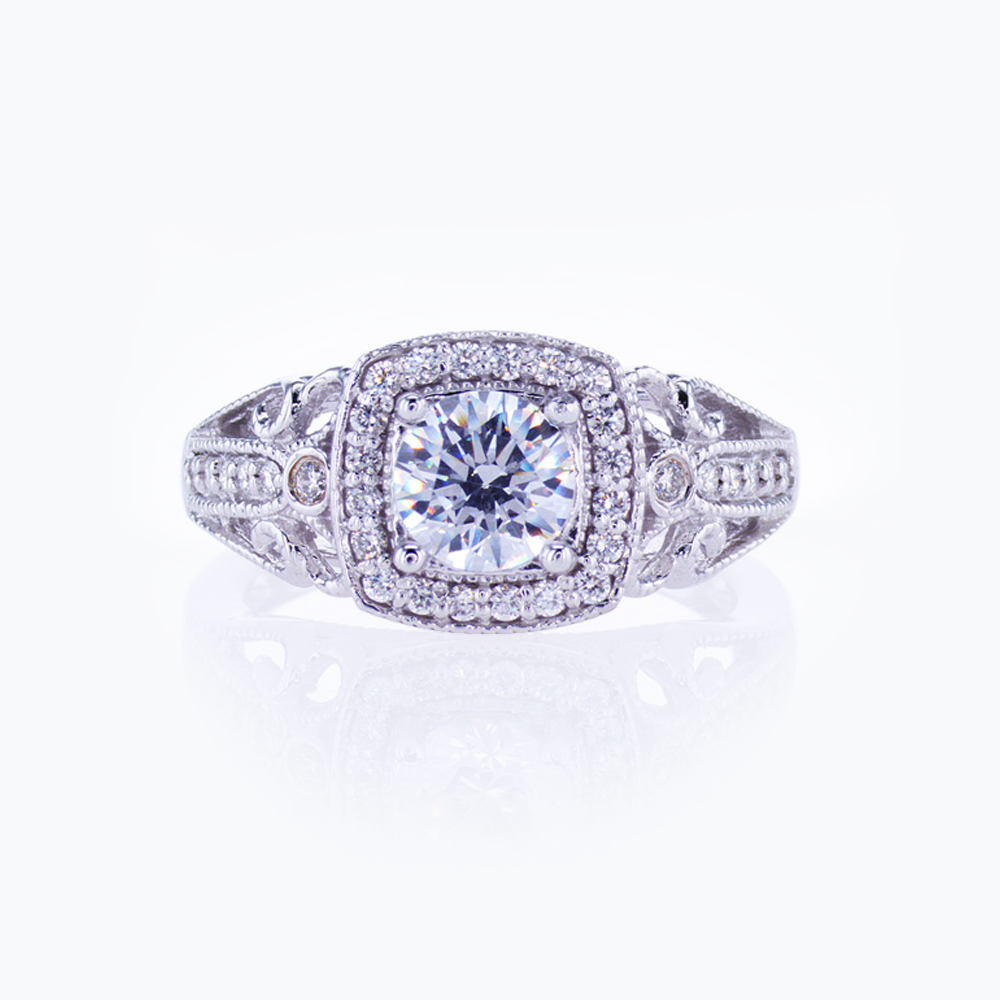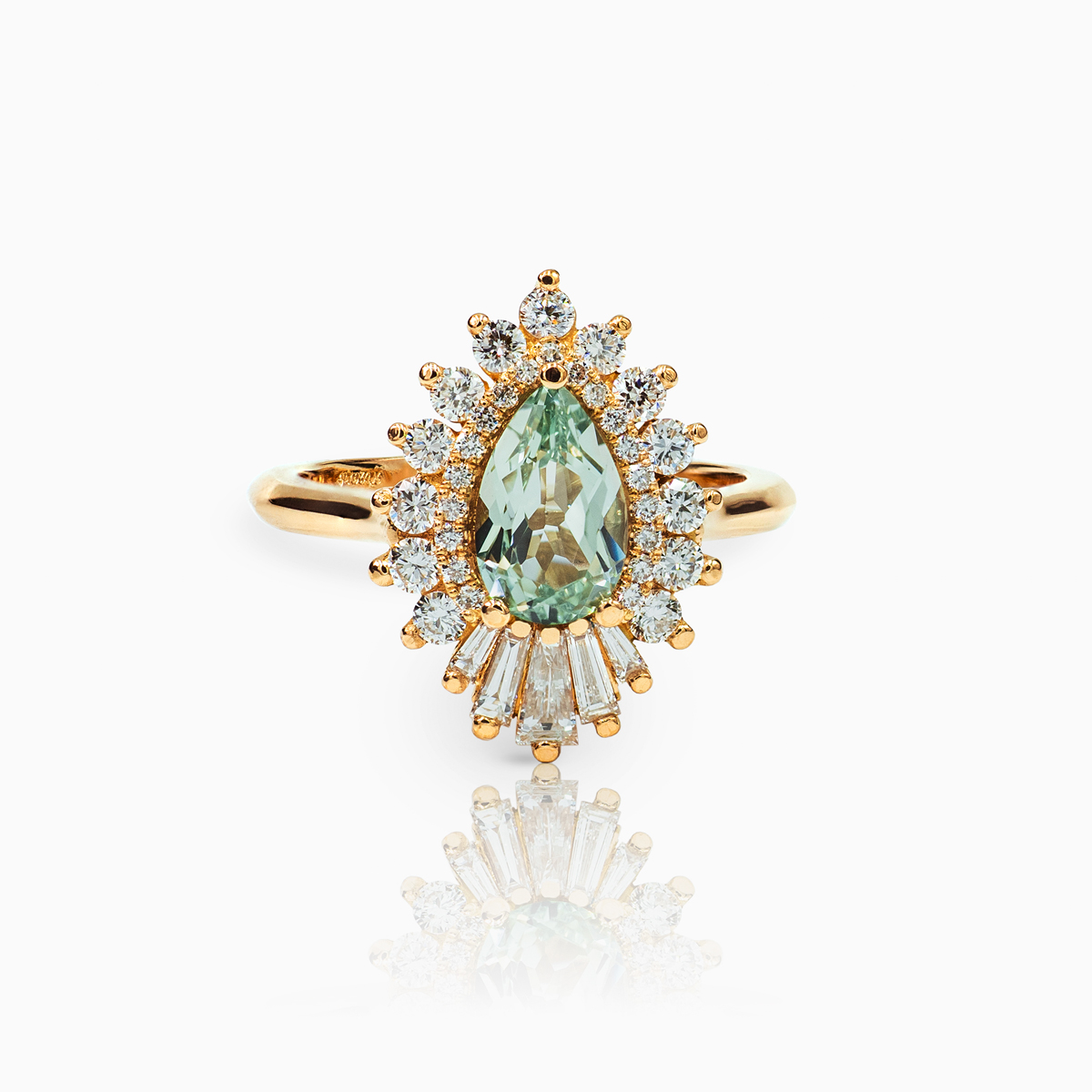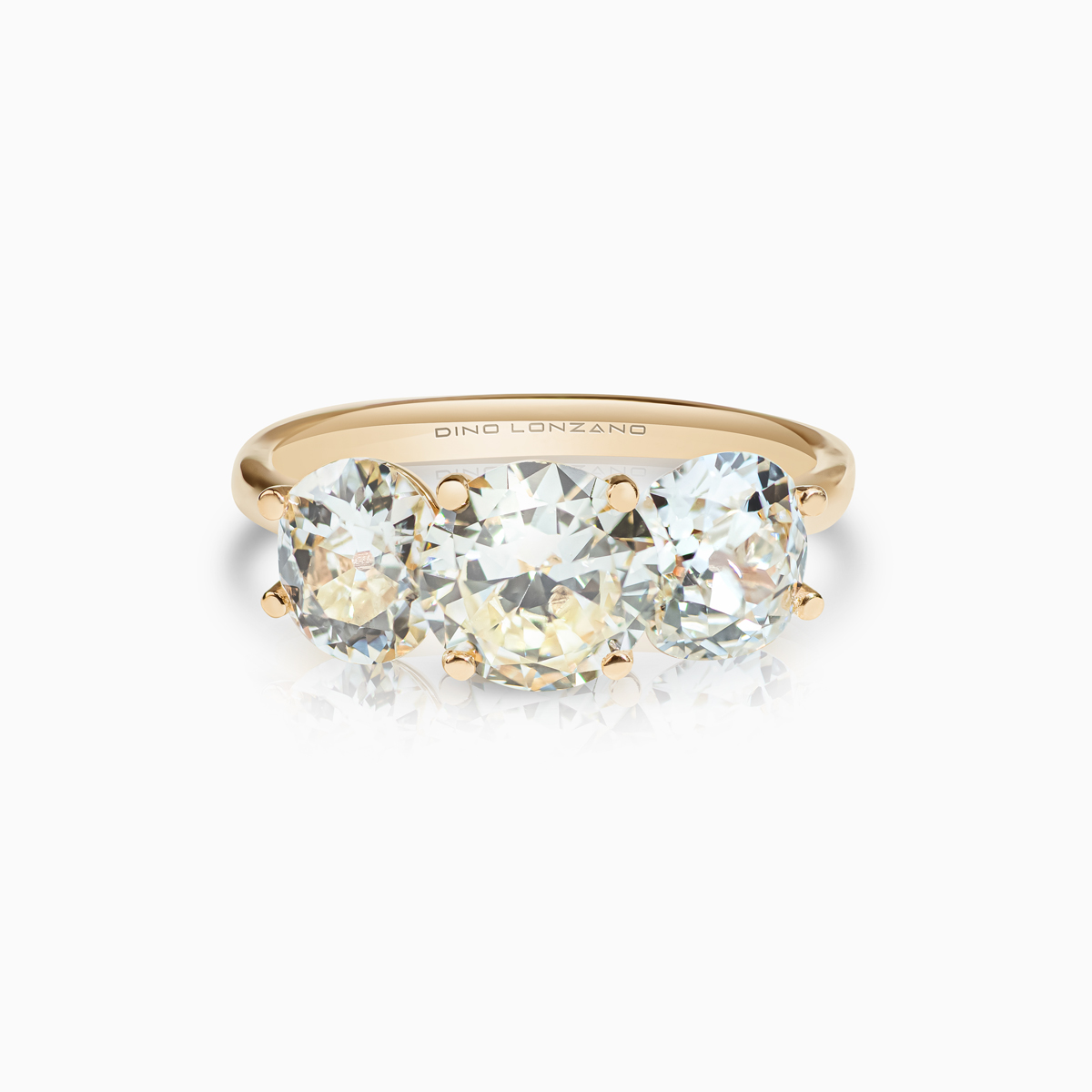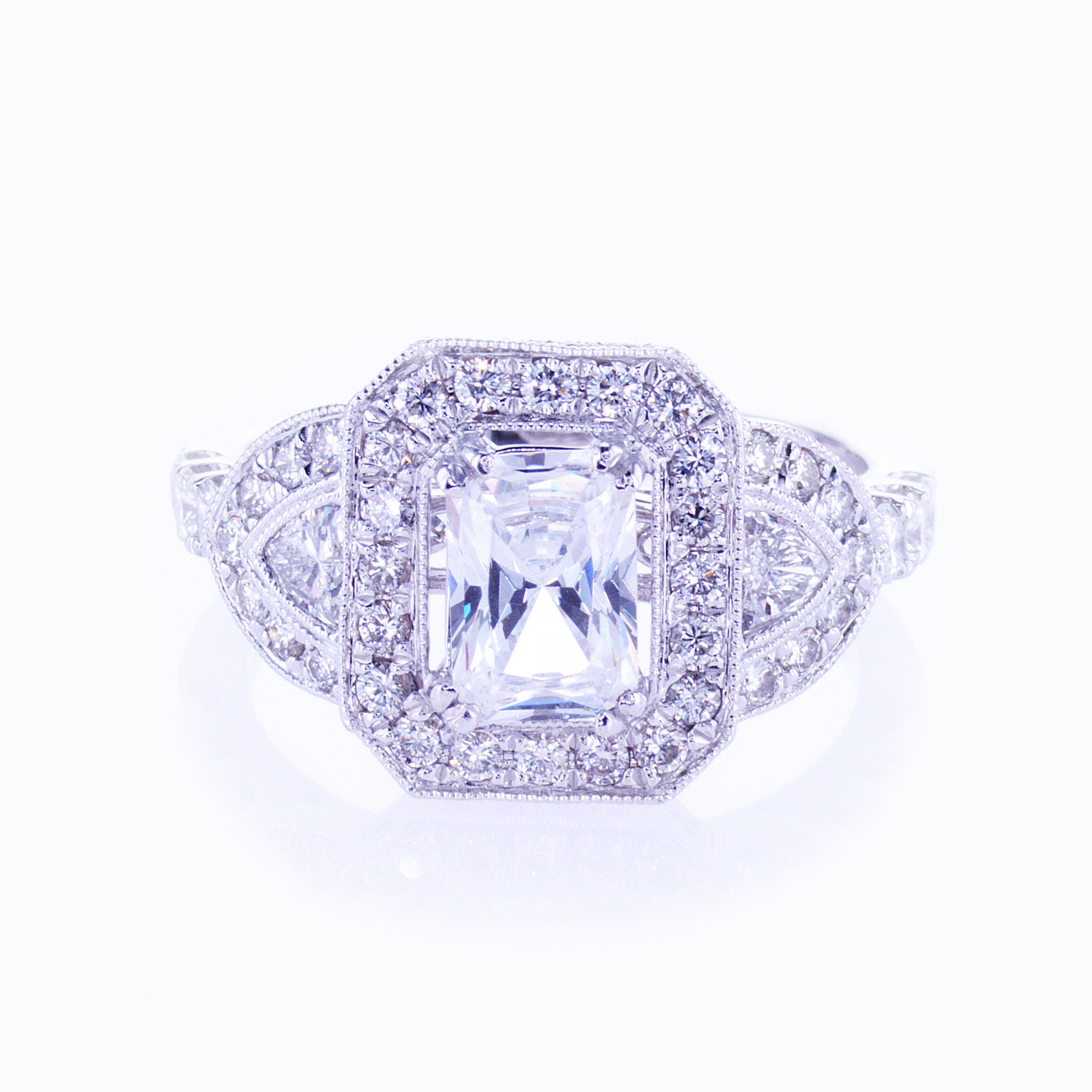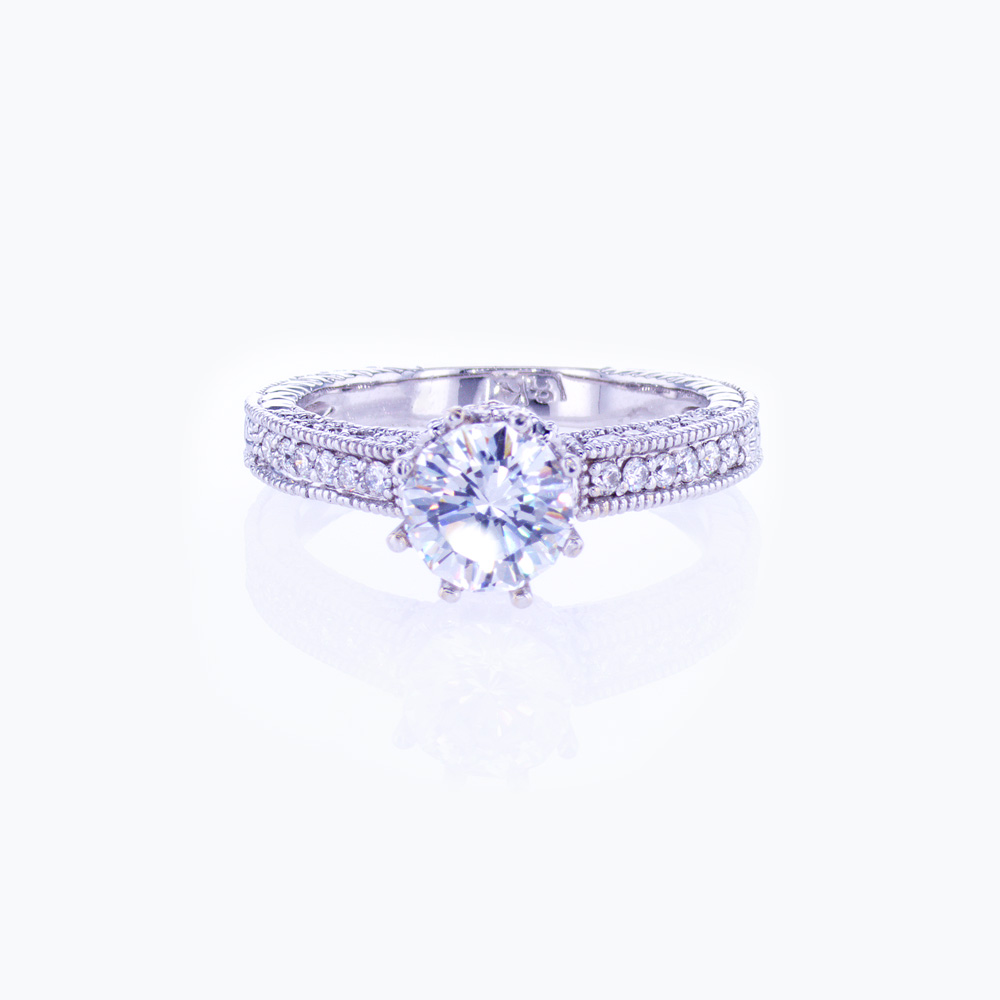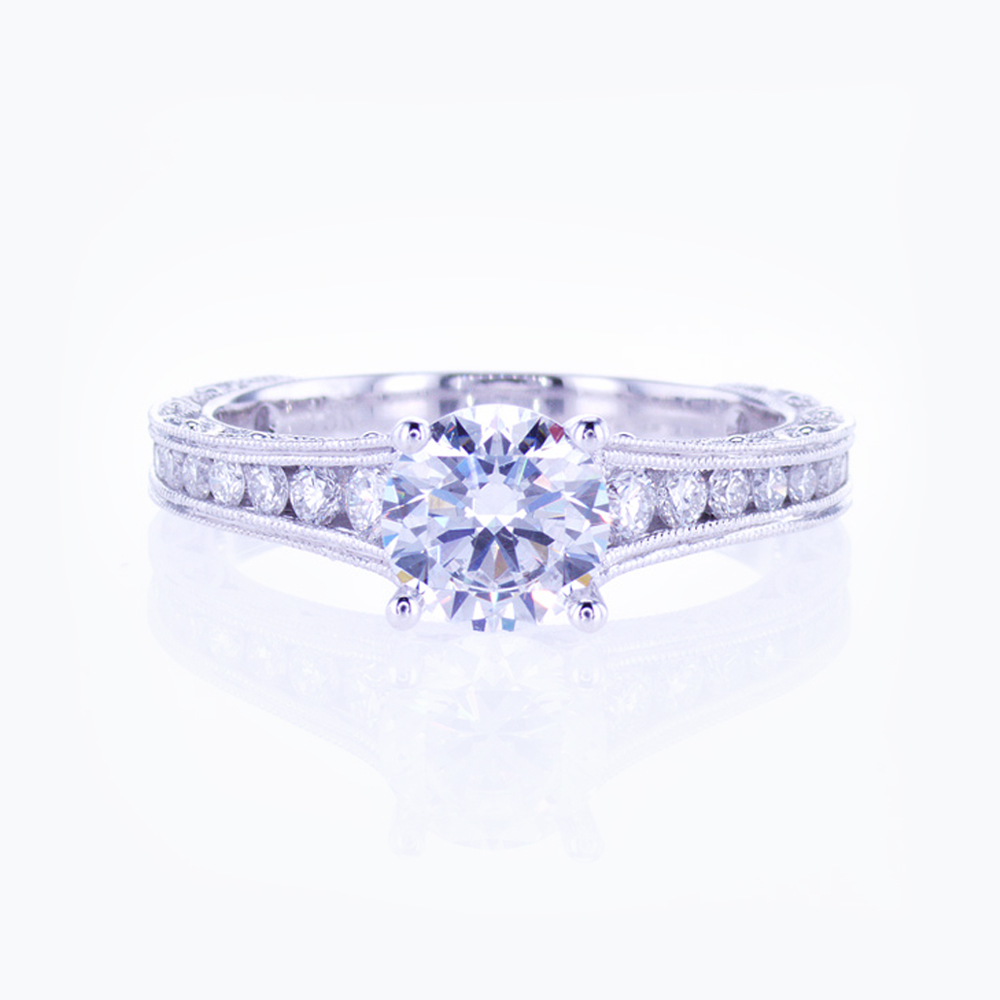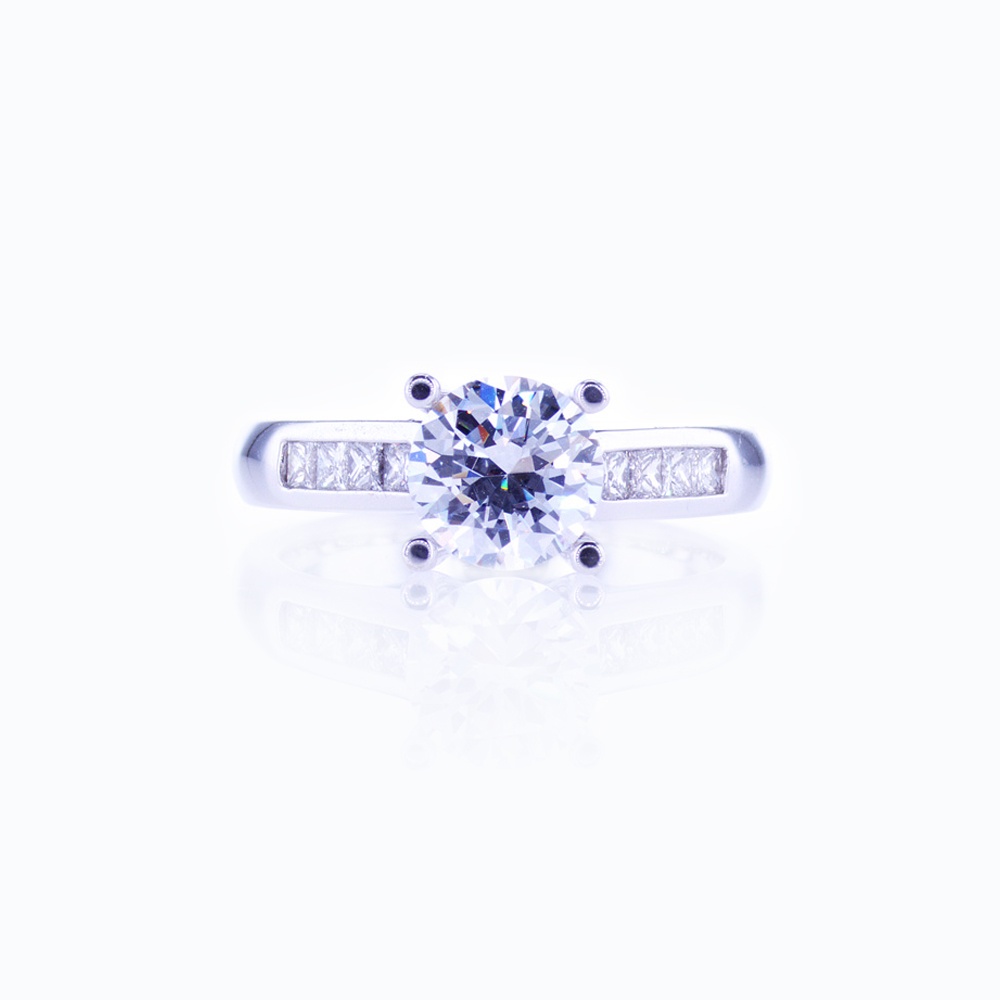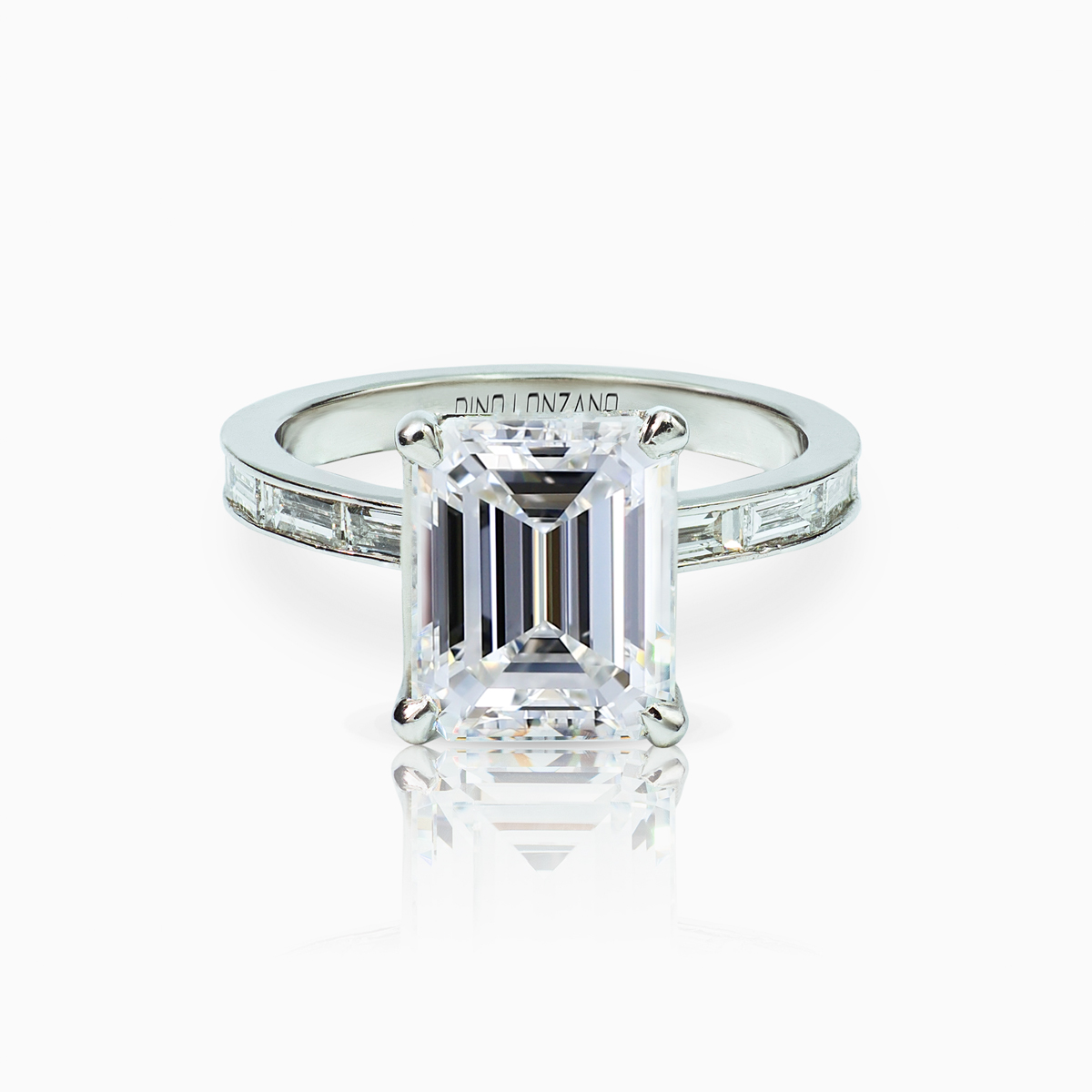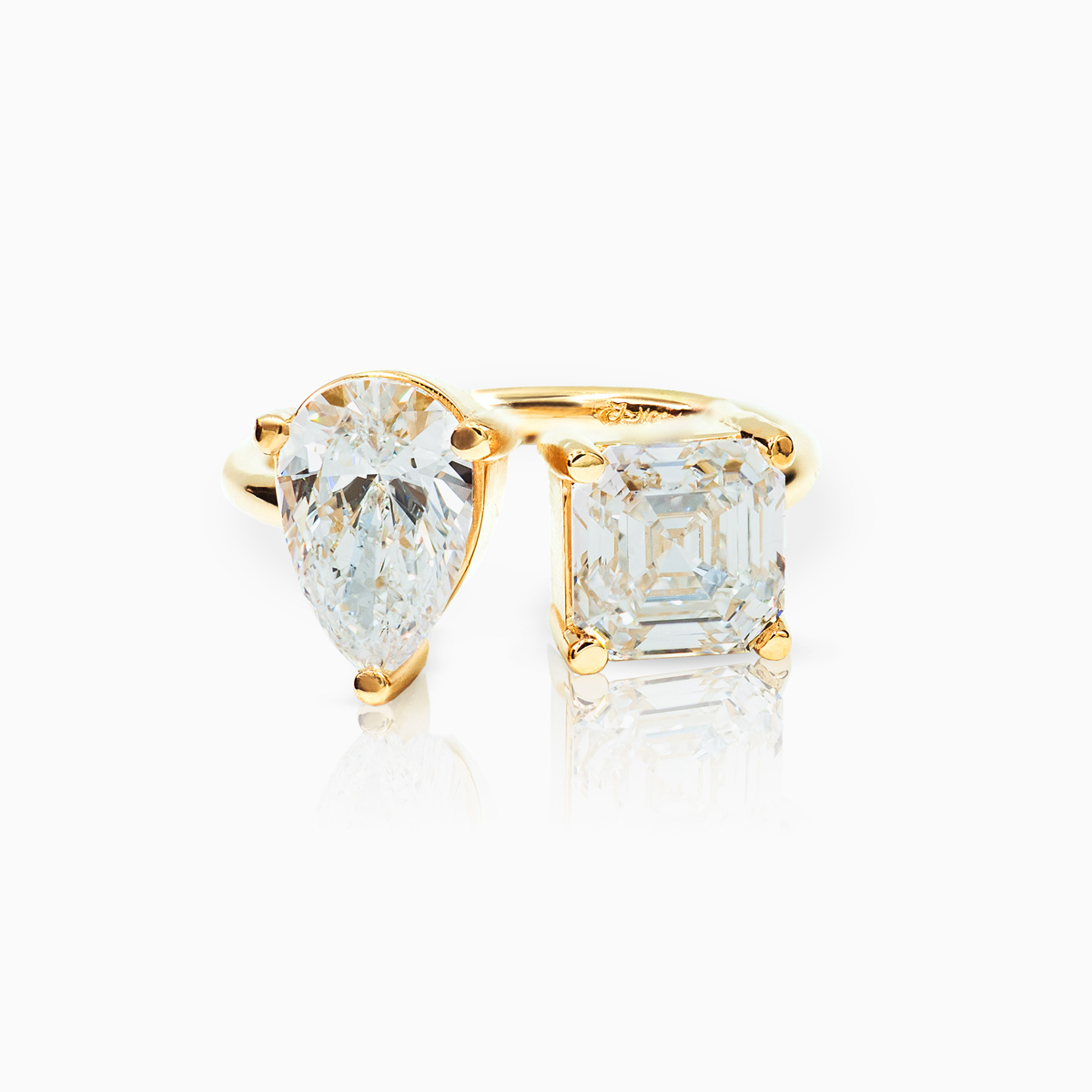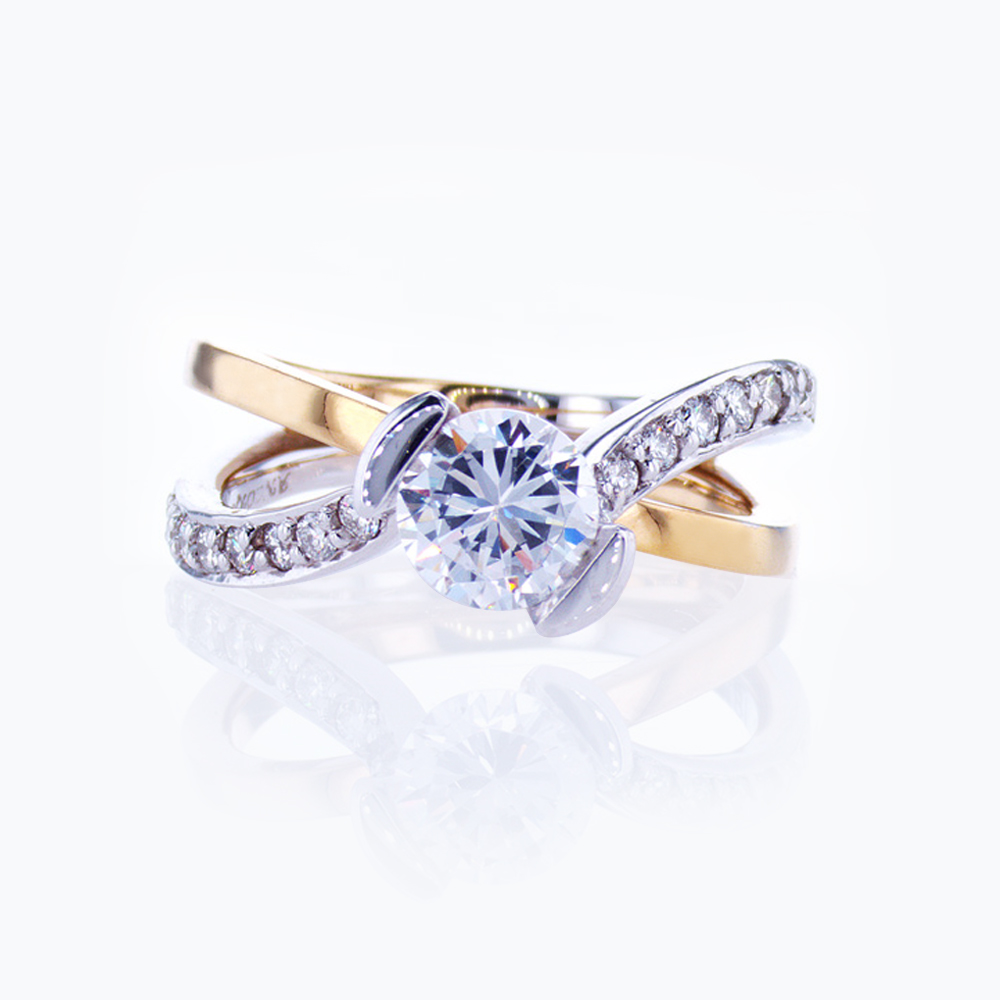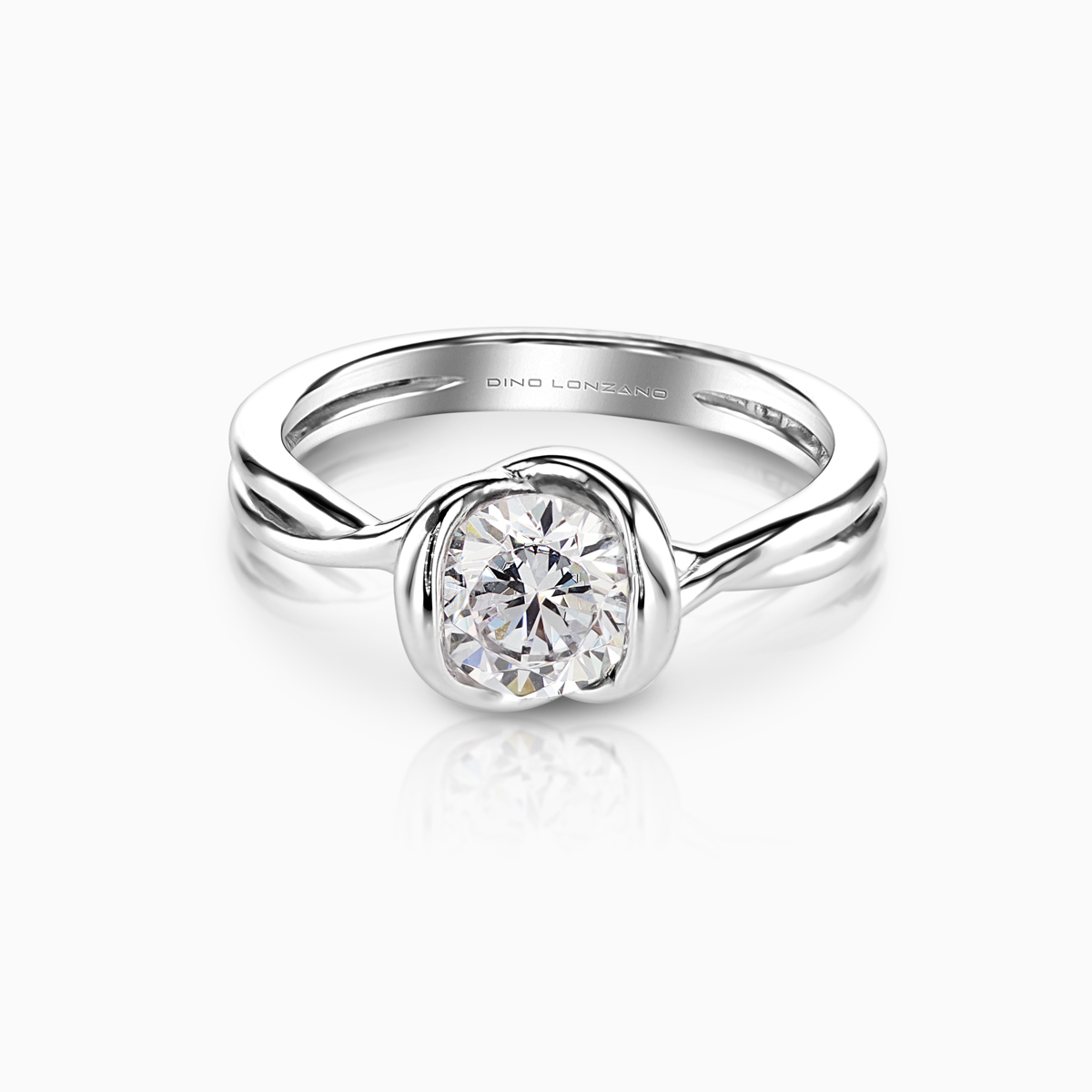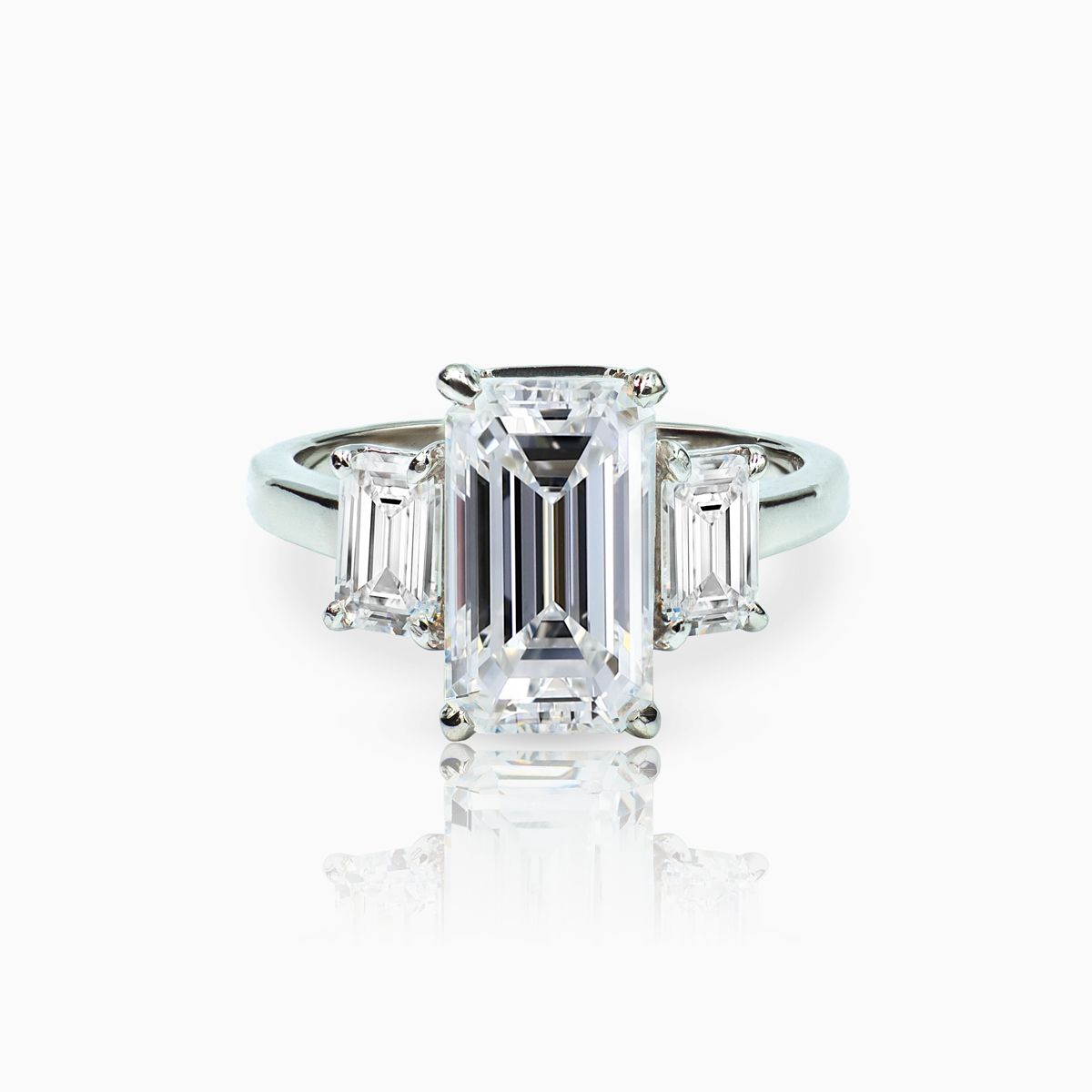Engagement Ring Style Guide

Feeling overwhelmed as you try to navigate the sea of engagement ring styles available to you? You are not alone! Solitaire, Halo, Pavé, Vintage — what are these terms & what do they actually look like? We’ll break down just a few of these general style categories to help give you a sense of which designs fit you best.
Solitaire Engagement Rings
The term “solitaire” refers to the concept of one single stone set in a ring (could be a diamond, gemstone, lab- grown, etc…). The visual that most often comes to mind when someone says solitaire, is a single stone set in prongs on a single band:
This is one of the most traditional ways to set a diamond, but it’s also the most classic. The benefits of this style are many: it focuses on the beautiful stone you’ve chosen; it’s classic & will therefore never go “out of style”; and the biggest bonus is that it will likely coordinate with any number of wedding band styles, so your options will be wide open in the future.
Pavé Set Engagement Ring
Another style term often used to describe a ring is “pavé”, which actually refersto how the stones (usually diamonds) are set. Of French derivation, the word literally means paved & refers to the way a surface is covered or “paved” with diamonds — each diamond (or gemstone) is set very close together with tiny prongs or beads of metal. Whether a single row of pavé diamonds or multiple rows are implemented, this setting style creates an overall sparkling effect. When done with very small stones, it almost looks like ‘diamond dust’ just sprinkled over the metal. Here are a few examples of stunning pavé styles.
Halo Style Engagement Ring
The “halo” motif is yet another style option. Although it has gainedpopularity in recent years, the concept has been present in ring design for centuries.
The idea is one central diamond or gemstone framed by a “halo” of accent diamonds or gemstones. The stones may be set in a variety of ways, in varying sizes and colors, to create a multitude of finished looks, ranging from vintage to modern to delicate. Often, this style may be chosen to create a larger overall look, making a slightly smaller stone appear visually bigger – a huge advantage when trying to maximize your engagement ring budget. Below is just a taste of the various ‘halo’ styles that are possible:
Vintage Engagement Rings Style
Vintage or vintage-inspired styles are something else to consider. Vintage technically refers to jewelry that is approximately 30 years old or older, but is a term most often used to describe pieces from about the 1940’s or earlier. Vintage-inspired is simply jewelry inspired by the designs seen in vintage jewelry. In both instances, the designs are often more embellished with more metal work exposed, as seen in filigree wirework, milgrain edging, or granulation & a variety of setting techniques are implemented. Although the designs within this category can differ greatly, here a few examples to give you a sense:
Channel Setting
Channel setting is a popular style for those who like a more modern & flush look, or perhaps for person who works with gloves on (such as doctors) as the stones are set within a channel of metal creating a clean & sleek design. Something along the lines of these:
Contemporary Engagement Ring Styles
The styles mentioned above are just the beginning, as each can be customized to make it your own. You could choose any shape of center stone from round to princess to emerald-cut, or implement a 3-stone motif (three central stones). You could decide you prefer your center stone to be bezel-set (set within a rim of metal), tension-set (set in place with an extreme amount of pressure), or flush set (set flush within the metal). Perhaps you’d like to vary the number of prongs on the center stone or change shape of the band (also known as the shank) to flat, round, half-round, knife-edge, etc. Maybe you’d like a split-shank (where the band opens up to the center stone) or a bypass motif (where the shank appears to ‘bypass’ the central stone) on your ring. Or you’d simply like to change the finish on the metal (such as high-polish, satin finish, or textured) or go for a two-tone look (using two colors of metal such as white & yellow gold). Below are just a few of these variations:
With so many styles & designs available, we highly recommend trying on as many ring options as possible. Whether you intend to be a part of the final ring shopping journey or not, seeing the plethora of options & subtleties in person & on your hand makes a world of difference. And, it allows you the chance to give that special someone the hints they might need to ensure you get the ring of your dreams. Narrowing down to your perfect design takes time, so be patient with yourself. And, you might just surprise yourself with what speaks to you. At Market Street Diamonds, we have cases filled with an incredibly wide array of styles & friendly associates just waiting to guide you, gently, through the process. We hope to see you soon!
